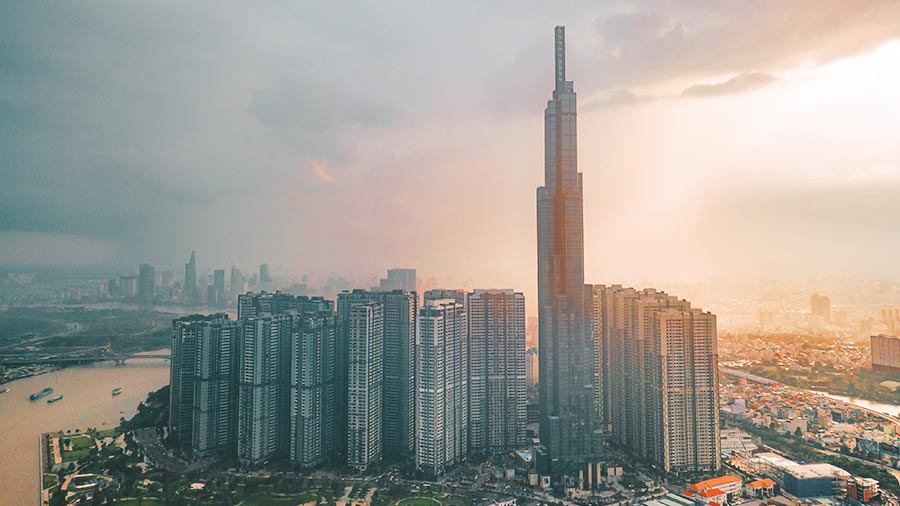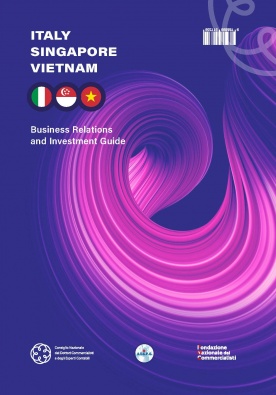India-Vietnam Look to Boost Trade in Agriculture
Vietnam and India plan to step up two-way trade in agricultural products and processed food. Here’s what it looks like now and what is expected to drive that change.
The Vietnam Trade Office in India, in collaboration with the National Investment Promotion and Facilitation Agency of India (Invest India), and the Federation of Indian Export Organisations (FIEO) held a teleconference on February 22 in which they discussed boosting trade in agriculture and processed food.
This is in line with increasing trade between the two nations more broadly.
With a population of over 1.4 billion people, India is a promising market for Vietnam’s farm produce and processed food. India’s farm produce and processed food also sell well in Vietnam – foods like seafood, chilli, spices, and fruits and vegetables – are all popular with Vietnamese consumers.
Moreover, the two countries have a comprehensive strategic partnership and have complimentary economic interests.
India is Vietnam’s 8th most significant trading partner, while Vietnam is India’s 15th largest trading partner and the 4th biggest in Southeast Asia. This trade has developed in line with a number of trade agreements that have seen both countries benefit immensely.
Trade relations between India and Vietnam
India and Vietnam have signed several trade agreements over the years to strengthen their economic ties and facilitate bilateral trade.
The biggest agreement is the ASEAN-India Free Trade Area. This is between India and the ASEAN countries, including Vietnam.
There is also the India-ASEAN Services and Investment Agreement. This is a comprehensive agreement that covers trade in services and investment between India and ASEAN countries.
The India-Vietnam Comprehensive Economic Cooperation Agreement also plays an important part in boosting trade between the two countries. It covers a range of areas, including trade in goods, trade in services, investment, and intellectual property rights.
Indian investment in Vietnam
Vietnam occupies a central place in India’s Act East Policy as well as in its Indo-Pacific strategy. As a result, India has made a number of contributions to the capacity building and socio-economic development of Vietnam.
Under the Mekong-Ganga Cooperation (MGC) framework, India has been implementing Rapid Impact Projects (RIPs), each worth around US$50,000, in different provinces of Vietnam to develop community infrastructure.
Furthermore, India is ranked 23 out of 129 countries and territories investing in Vietnam. Since the beginning of 2023, India started five new projects in Vietnam with a total registered capital of US$3.7 million. This brings the all-time total number of Indian FDI projects in Vietnam to 349. These are worth more than a collective US$1 billion.
See also: Vietnam FDI Tracker: Latest Update February 2023
Key Indian agricultural exports to Vietnam 2022
| Description | Value (US$) |
| Fishery products |
377,949,739 |
| Animal fodders and animal fodder materials |
377,919,344 |
| Maize |
287,157,393 |
| Cotton |
223,422,023 |
| Yarn |
103,194,794 |
| Fruits and vegetables |
53,452,599 |
| Wheats |
27,213,086 |
| Animal, vegetable fats and oils |
10,849,581 |
| Tobacco materials |
2,109,656 |
Source: Vietnam General Department of Customs
Aquaculture products
Vietnam has a rapidly growing population, and there is a high demand for fish and seafood products in the country. India is a significant producer and exporter of fishery products, which are competitively priced. This makes them an attractive option for Vietnamese consumers and businesses.
Adding to that, India offers a diverse range of fishery products, including frozen shrimp, fish filets, squid, and cuttlefish, catering to the varied tastes of Vietnamese consumers.
Most importantly, however, Indian fishery products are known for their high quality, with many Indian companies adhering to international standards for production, processing, and packaging.
See also: Aquaculture in Vietnam
Animal fodder and animal fodder materials
Vietnam has a rapidly growing livestock industry, which requires a significant amount of animal feed and fodder materials.
India offers a diverse range of animal feed and fodder materials, including soybean meal, corn gluten meal, rice bran, and maize, which cater to the varied needs of Vietnamese livestock farmers.
Maize
Maize from India is cost-effective, high-quality, and the range is diverse. This makes Indian maize very attractive to Vietnamese buyers.
Vietnam’s key agricultural exports to India 2022
| Description | Value (US$) |
| Yarn | 120,996,731 |
| Coffee | 57,404,904 |
| Pepper | 53,352,880 |
| Bamboo and rattan products | 39,922,436 |
| Wood and wooden products | 31,447,738 |
| Fishery products | 25,652,242 |
| Animal fodders and animal fodder materials | 23,045,567 |
| Cashew nut | 16,618,114 |
| Tea | 3,377,924 |
| Pastrycooks, sweets and cereals products | 2,048,817 |
Source: Vietnam General Department of Customs
Yarn
There is growing demand for textile products made in India, which has led to an increase in demand for yarn. Vietnam is a major producer of cotton and other fibers and Vietnamese yarn is known for its high quality, with a reputation for durability and strength. Indian textile manufacturers are willing to pay a premium for this quality, making Vietnamese yarn a valuable commodity.
Vietnam also has the potential to become a significant sourcing partner for India in the technical textile subsector, as the Indian government is actively working to strengthen this industry. A production-linked incentive program has been implemented to support this goal.
Pepper
Vietnam is the world’s largest producer and exporter of black pepper, and India is one of its major export markets. Vietnamese pepper is known for its high quality and pungent flavor, which makes it a popular spice in Indian cuisine.
Bamboo and rattan products
Bamboo and rattan have cultural significance in both Vietnam and India. In both countries, these materials are used for traditional crafts and furniture making.
Bamboo and rattan are sustainable and eco-friendly materials, which are becoming increasingly important to consumers in India. Vietnamese bamboo and rattan products are made using sustainable and environmentally friendly practices, making them a popular choice for environmentally conscious consumers.
Coffee
Vietnam is one of the world’s largest producers of coffee, with a production volume that has been steadily increasing in recent years. In 2020, Vietnam produced over 1.6 million tons of coffee, making it the second-largest coffee producer in the world.
Vietnamese coffee is known for its competitive pricing, with lower production costs than many other coffee-producing countries. Vietnamese coffee is typically characterized by its bold, full-bodied flavor and hints of chocolate and spice.
In addition to traditional coffee beans, Vietnam is also increasingly exporting other coffee products, such as instant coffee, roasted coffee, and specialty coffee. This diversification of the product range has helped to increase the value of Vietnamese coffee exports to India.
While the coffee culture in India is steadily growing, beyond traditional hubs in southern India, Vietnamese suppliers compete with coffee imports from Cote d’Ivoire, Brazil, and Indonesia from which it imported US$11.1 million, US$3.84 million, and US$24.4 million respectively.
This growing boom in coffee exports could also translate to cocoa more broadly with India the world’s third largest chocolate importer. Its chocolate market is estimated to be worth US$2.4 billion in 2022.
See also: Vietnam’s Agricultural Sector: Rising Star in Food Production
Barriers to Vietnamese agriculture export products to India
Notably, concerns were raised about India’s trade barriers earlier this year. Specific concerns include the imposition of a floor price for importing pepper and cashew nuts, restrictions on importing incense, and requirements for verifying the origin of goods.
The Minister of Industry and Trade of Vietnam, Nguyen Hong Dien, has said that these regulations are burdensome for exporters and impede trade.
Further, Vietnamese exports of fruit have been significantly restricted as they face high import duties in India. Currently, dragon fruit is the only Vietnamese fruit that does not attract an import tariff in India.
The future of trade between Vietnam and India
Investment between Vietnam and India, particularly in the agriculture sector is growing. This investment is likely to continue, with both countries looking to strengthen their agricultural infrastructure and supply chains.
Furthermore, with the assistance of several trade agreements, growing consumer classes in both countries, along with diversification of agricultural products produced, the future of agricultural trade between Vietnam and India is expected to be positive moving forward.
About Us
Vietnam Briefing is published by Asia Briefing, a subsidiary of Dezan Shira & Associates. We produce material for foreign investors throughout Eurasia, including ASEAN, China, India, Indonesia, Russia & the Silk Road. For editorial matters please contact us here and for a complimentary subscription to our products, please click here.
Dezan Shira & Associates provide business intelligence, due diligence, legal, tax and advisory services throughout the Vietnam and the Asian region. We maintain offices in Hanoi and Ho Chi Minh City, as well as throughout China, South-East Asia, India, and Russia. For assistance with investments into Vietnam please contact us at vietnam@dezshira.com or visit us at www.dezshira.com
- Previous Article Vietnam News in Brief: Weekly Roundup March 17
- Next Article What’s Driving Mergers and Acquisitions in Vietnam’s Healthcare Sector?































